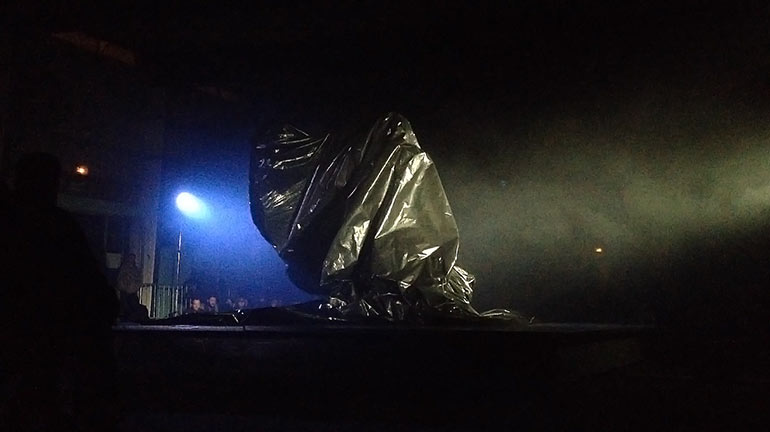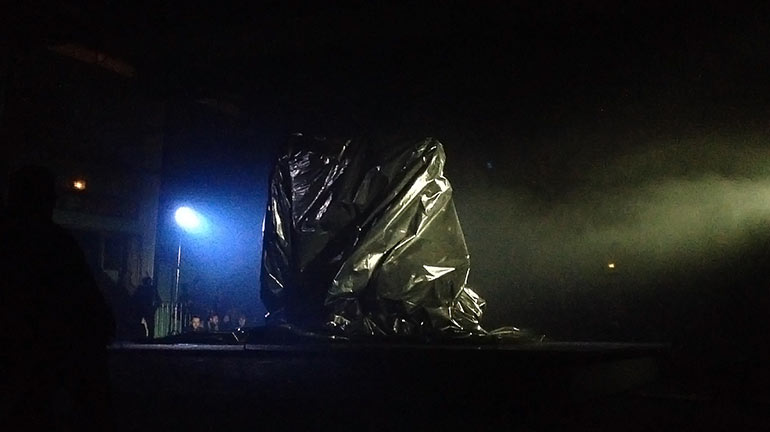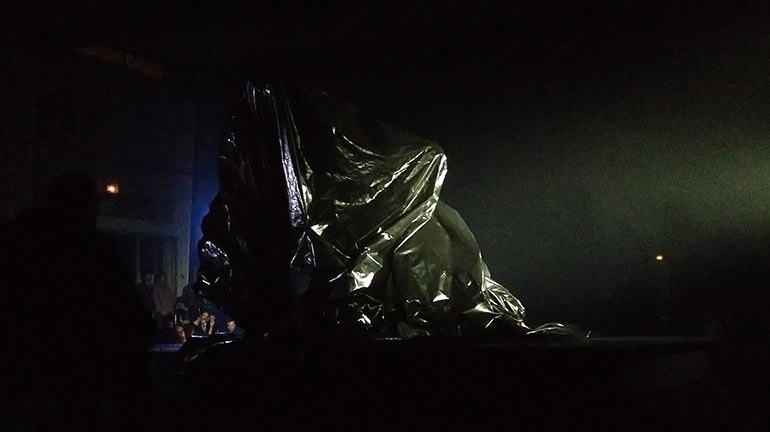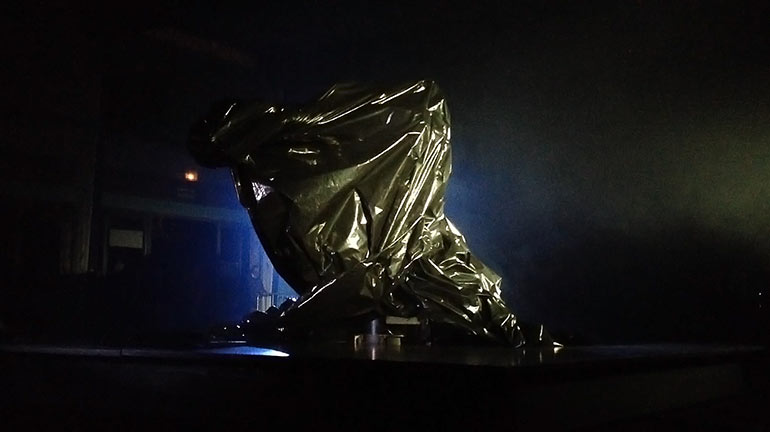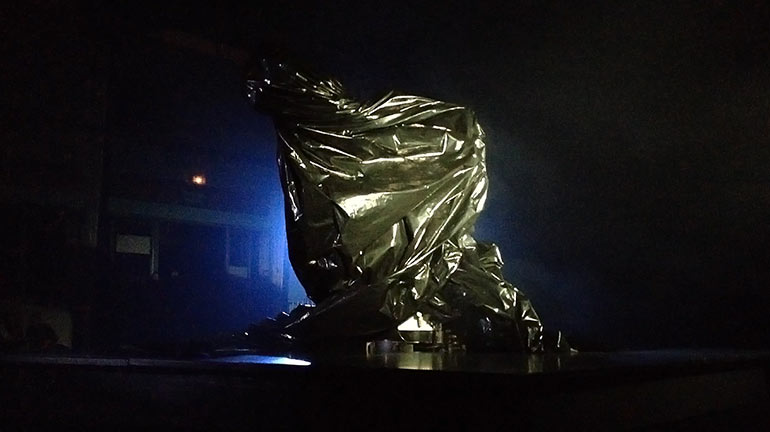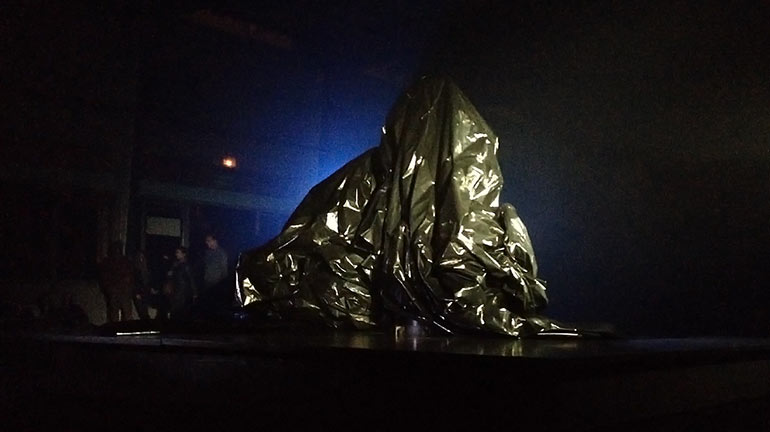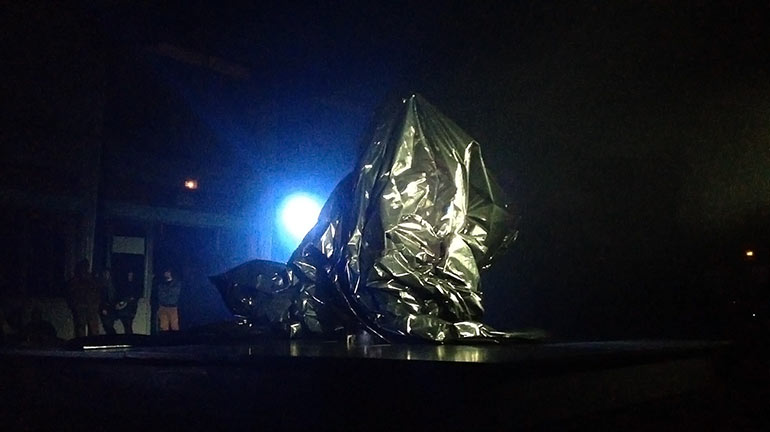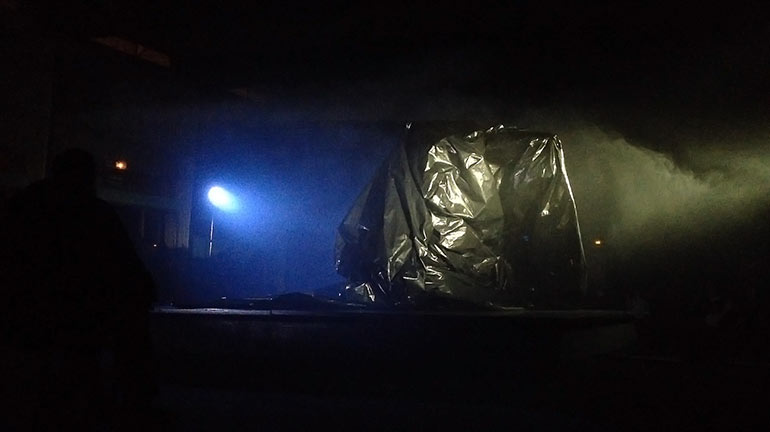de page
Without Object
sans objet
INSTALLATION
An industrial robot covered entirely with a black tarpaulin forms a strange moving sculpture. I based the Sans objet installation on the performance of the same name created in 2009. But this idea came prior to the performance and was actually sort of its genesis.
This tarpaulin and machine create a shape that’s at the limit of living. The machine’s programmed movements create accidental folds in the plastic, and the life this creates reminds me that things that are programmed and those that are accidental are characteristic of any living system. Human silhouettes appear through the black tarpaulin, taking on the shape of animals, mythological figures and science fiction characters. The folds are emphasized by the light. The sound accentuates this dual presence, that of the machine with the power of its engines and that of the material that comes to life in the folds.
I also imagined this installation as a birth. Beyond the appearance of life, there is something about the birth of form, the original question, pleasure and the mystery of art.
Aurélien Bory

Robots take the floor
06 January 2016
Digital objects misappropriated with poetry and humour create diffuse anxiety.
WHO?
One exhibition, two commissioners: Gilles Alvarez, artistic director of the Némo digital arts biennial, and José-Manuel Gonçalvès, director of Centquatre, present a panel of works offering a glimpse of the way new technologies are being used by contemporary artists, from Anish Kapoor to young Félicie d’Estienne d’Orves.
WHAT?
Counter-performing and supplicant robots, a battle between a radiator and a refrigerator, airport posters that generate random surrealist poetry… With a great deal of humour, the audience is drawn into a veritable “techno freak show”. “The prosopopoeia consists in getting an inanimate object to ‘speak’”, reminds Gilles Alvarez. “Here, the audience doesn’t get to visit Steve Jobs’s house, but that of Théophile Gautier, Joris-Karl Huysmans or Philip K. Dick.”
HOW?
While works have difficulty affirming themselves beyond technical demonstrations, most modify the spectator’s perception and/or the scope of art. Like Aurélien Bory’s large robotic structure covered with a construction tarpaulin that reminds us of E.T. or the Loch Ness monster. Or this “masochistic” drill bored in several places by the bit that it holds, that is transformed by artist Michel de Broin into a “fountain”, referring to Marcel Duchamp’s work of the same name. “In mutilating itself, it changes its useful value into artistic value,” comments Dominique Moulon. Freed of their function, these (art) works of a different kind arouse empathy tinged with anxiety. To be thought over carefully.
M.R
“Director Aurélien Bory deforms space and time by covering a mechanical arm with a tarpaulin of light”
in Art Absolument (September-October 2015)



